This blog was updated on 19 March 2024.
New Guinea:
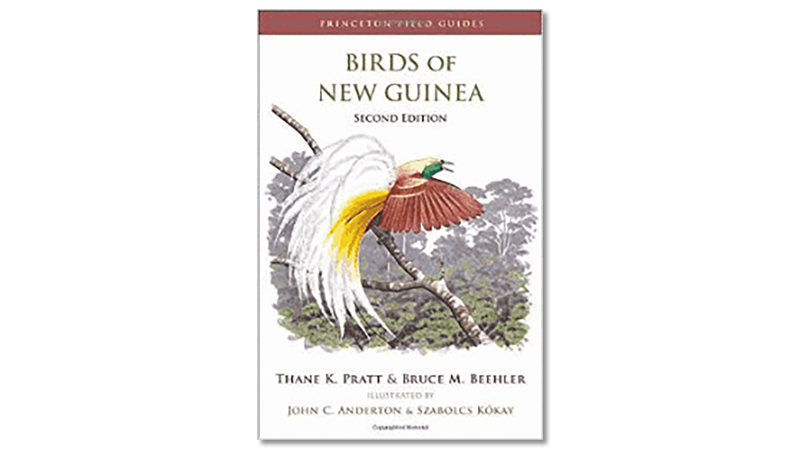
Birds of New Guinea 2nd Edition (Pratt and Beehler, 2014). The second edition recently came out and is a great field guide. This book is perfect whether you are planning a trip to West Papua (politically part of Indonesia) or Papua New Guinea (PNG). The book has maps on the same page as the plates, useful, detailed text, pleasing artwork (some plates are a little too “arty” and cluttered, which can make learning the birds tricky) but is generally almost everything one expects from a field guide. This is a must-have book that beautifully illustrates nearly all the birds-of-paradise (some very recent splits are not included), paradise kingfishers, jewel-babblers, fruit doves, and more – these are some of the most spectacular birds in the world, so worth having a copy of the book even if you don’t plan on traveling here. This is a practically essential guide if you’d like to go and see “Attenborough’s Paradise” firsthand (but also note below for another very good option).
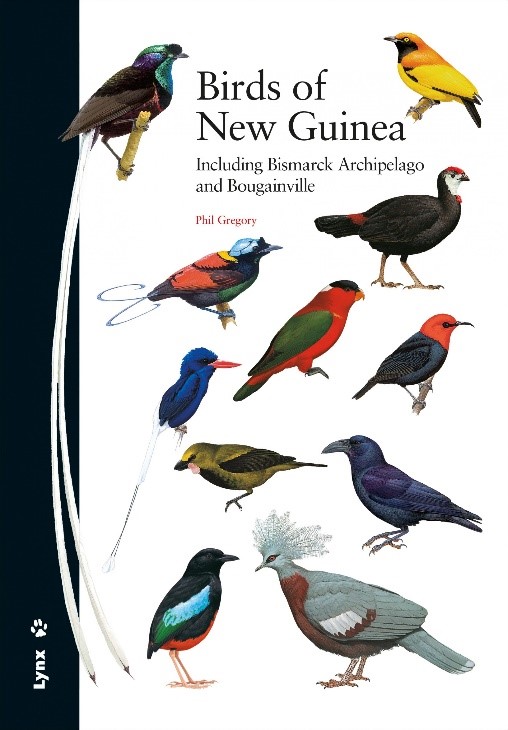
Birds of New Guinea: Including Bismarck Archipelago and Bougainville (Gregory, 2017). This new book is the most complete guide covering the whole of the New Guinea region, which comprises Indonesian West Papua (including the Geelvink Bay Islands, e.g. Biak and Numfor, the West Papuan Islands, and the Aru Islands) and Papua New Guinea and its associated islands, Bougainville and the Bismarcks. A total of 943 species (which includes 456 endemics) are detailed, and in-depth information is also provided for distinct subspecies. Over 1,780 excellent and clear illustrations provide help with species identification, along with adjacent maps and species descriptions opposite. The layout of the plates (uncluttered with clear backgrounds) assists visiting birders trying to learn loads of new and exciting birds without any potentially distracting additional artwork.
Australia:
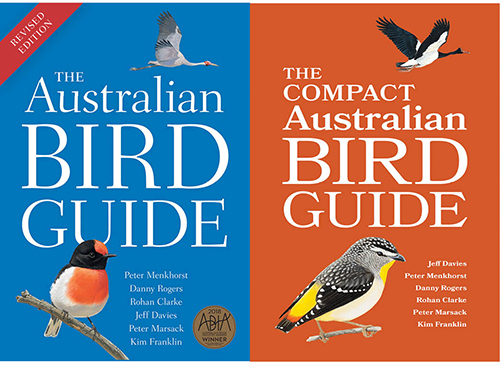
The Australian Bird Guide Revised Edition (Menkhorst, Rogers, and Clarke, 2019/2022). In our opinion the best guide to the birds of Australia (and one of the top guide books for anywhere in the world for that matter). It includes multiple excellent illustrations for each species (almost 5,000 in total), depicting the different ages, sexes, and breeding plumages, with particular emphasis on providing the fine detail needed to identify difficult groups and distinctive plumages. The distribution maps are accurate and clear with subspecies information also given. This book has set a new standard for Australian bird identification and is highly recommended. Note it is a large book and weighs rather a lot so is not a “field guide”, nor is it intended to be so, but it will be a useful book to keep in your daypack or vehicle during your Australia birding adventure. After some complaints about the usability of the index of this guide the publishers issued a downloadable and printable PDF index (here). In August 2022, a compact version of this guide was published and provides an excellent resource while birding in Australia on a tour or if you are limited for space. It is still packed full with lots of useful identification information, the same great illustrations and maps, but is slimmed down to make it easier for a travelling birder and highly recommended for when on our Australian bird tours.
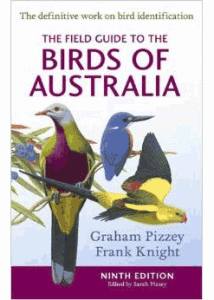
The Field Guide to the Birds of Australia 9th Edition (Pizzey and Knight, 2013). This is the ninth edition of another fantastic guide and prior to the publication of The Australia Bird Guide (above) was probably the best book on Australian birds. The plates and illustrations are clean, clear, and excellent, and the maps and information are good and accurate. Again, it is a little on the large size to carry around but a great option for your daypack or keeping inside the vehicle.

Birds of Australia 8th Edition (Simpson and Day, 2010). This is the eighth edition of the seminal Australian bird book. Good plates and artwork (some plates are a little “busy” making learning the birds that little bit trickier, as they have a lot going on in them). The guide also has good range maps and species accounts and is a useful size for taking into the field. Note this book is currently out of print and is published by Helm in the UK and Princeton in the US.
New Zealand:

The Hand Guide to the Birds of New Zealand 2nd Edition (Heather and Robertson, 2015). The best guide for birding in New Zealand. It is comprehensive and very easy to use. An impressive 374 species are included with very good illustrations and text, with accurate distribution maps. A larger version of this publication is available and is confusingly entitled “The Field Guide to the Birds of New Zealand” but is more of a bookshelf book due to its increased size.
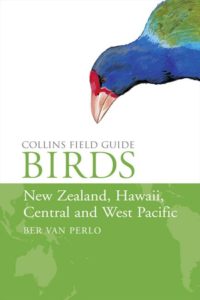
Collins Field Guide: Birds of New Zealand, Hawaii, Central and West Pacific (van Perlo, 2011). A useful hardback guide in that it covers a huge area and over 750 species. It is small and light and thus easy to carry around, however, information on each species is seriously lacking (many birds only having two lines of text), and due to its small size, some of the illustrations and maps are not the easiest to use. This book is also currently out of print but if you are on a cruise covering this region and can get hold of a copy it could be useful, but for any serious birding trip you really want to be focusing your attention on the specific country guides outlined in our blogs.
Pacific Islands:
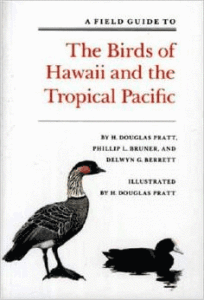
A Field Guide to The Birds of Hawaii and the Tropical Pacific (Pratt, Bruner, and Berrett, 1987). Although this is an older guide, it very adequately covers Hawaii, Eastern Polynesia, Central Polynesia, Fiji, Samoa, Tonga, and Micronesia. The plates (at the back of the book) are very good. There are no range maps, but there is good information on all the species in the book.
Melanesia:
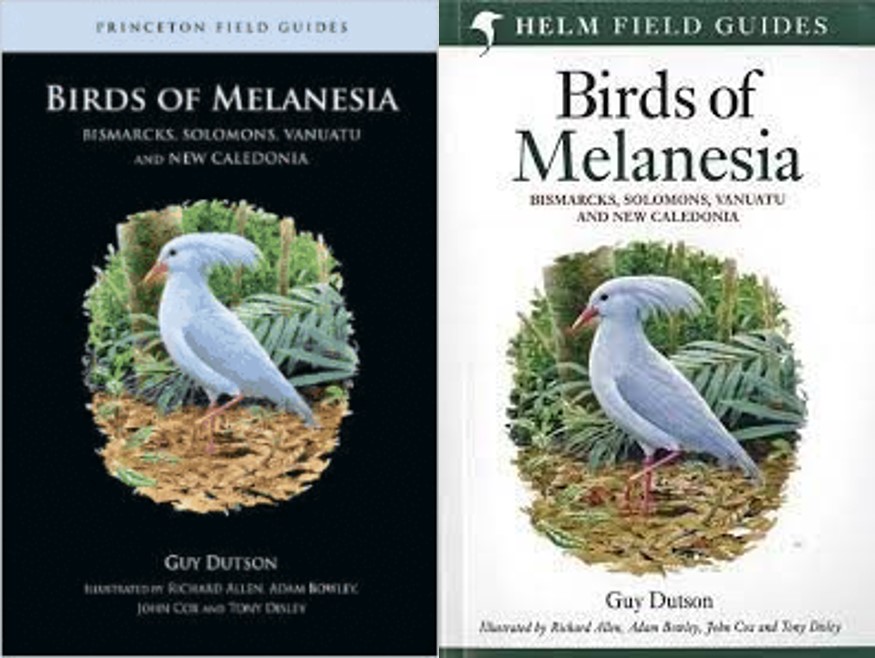
Birds of Melanesia: Bismarcks, Solomons, Vanuatu, and New Caledonia (Dutson, 2011). This excellent field guide covers the endemic-filled Melanesian region and is a great book for anyone visiting the area. It has very good plates showcasing the 650 species that occur. There are no range maps, but these are not necessary as the book is organized by island/specific area to make it easy to follow and this approach works well. Most birders will want to take a birding holiday to New Caledonia at some stage or another for one of the world’s most sought-after birds, the spectacular Kagu (which is also a monotypic family).
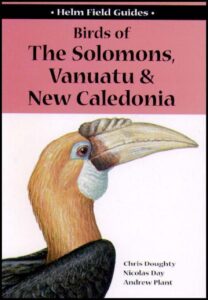
Birds of the Solomons, Vanuatu, and New Caledonia (Doughty, Day, and Plant, 1999). Although not covering as broad an area as Birds of Melanesia (above), this small, lightweight guide has good illustrations and a surprising amount of information for each of the 362 species (including 117 endemics) covered, with useful distribution maps. Unfortunately, it is now out of print, but if you can get hold of a second-hand copy it could come in useful on a New Caledonia birding tour.
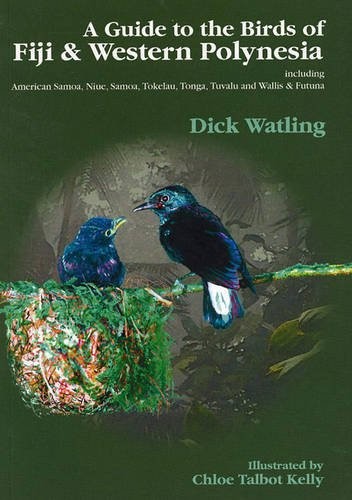
A Guide to the Birds of Fiji and Western Polynesia: including American Samoa, Niue, Samoa, Tokelau, Tonga, Tuvalu, and Wallis and Futuna 2nd Edition (Watling, 2003). A guide covering a large area and useful if birding in the Pacific. Unfortunately, some of the plates are rather poor (shorebirds particularly) but some are useful, and the text provided is good. Given the age of this book many of the species’ names are unrecognizable and many species are not shown due to the huge number of splits that have since occurred.
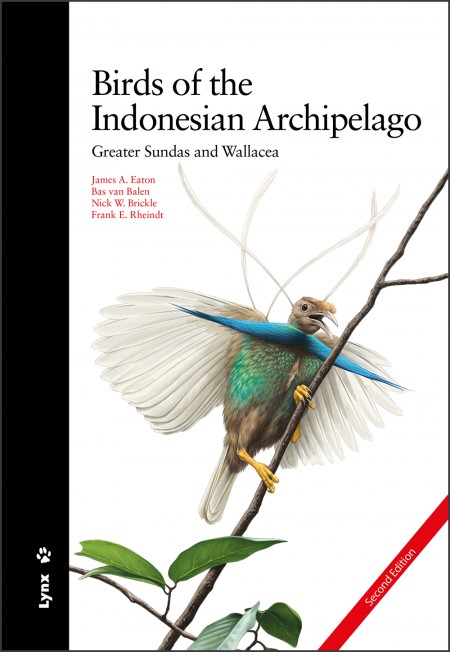
Birds of the Indonesian Archipelago: Greater Sundas and Wallacea 2nd Edition (Eaton, van Balen, Brickle, and Rheindt, 2021). The hugely revised (and improved) 2nd edition of this important field guide will be valuable to anyone planning a birding trip to the Greater Sunda or Wallacean region of Indonesia – including Java, Sumatra, Bali, Borneo (it includes total coverage of the island of Borneo rather than being restricted to political boundaries), Sulawesi, Halmahera, Lesser Sundas (e.g. Sumba, Flores, Alor, Komodo, Timor, Rote etc.) and many other islands such as Obi, Seram, Buru, Ambon, and Tanimbar. Now available with a flexi-cover, the improved usability and durability is a welcome update, especially when considering the cost of the book. The taxonomy of this guide is very different to the major taxonomical bodies of eBird/Clements and IOC. It is nearest to BirdLife/HBW taxonomy but also draws on the authors’ considerable experience in the region (including from thus far unpublished research) so it is necessary to do some cross referencing for the taxonomy you follow.
